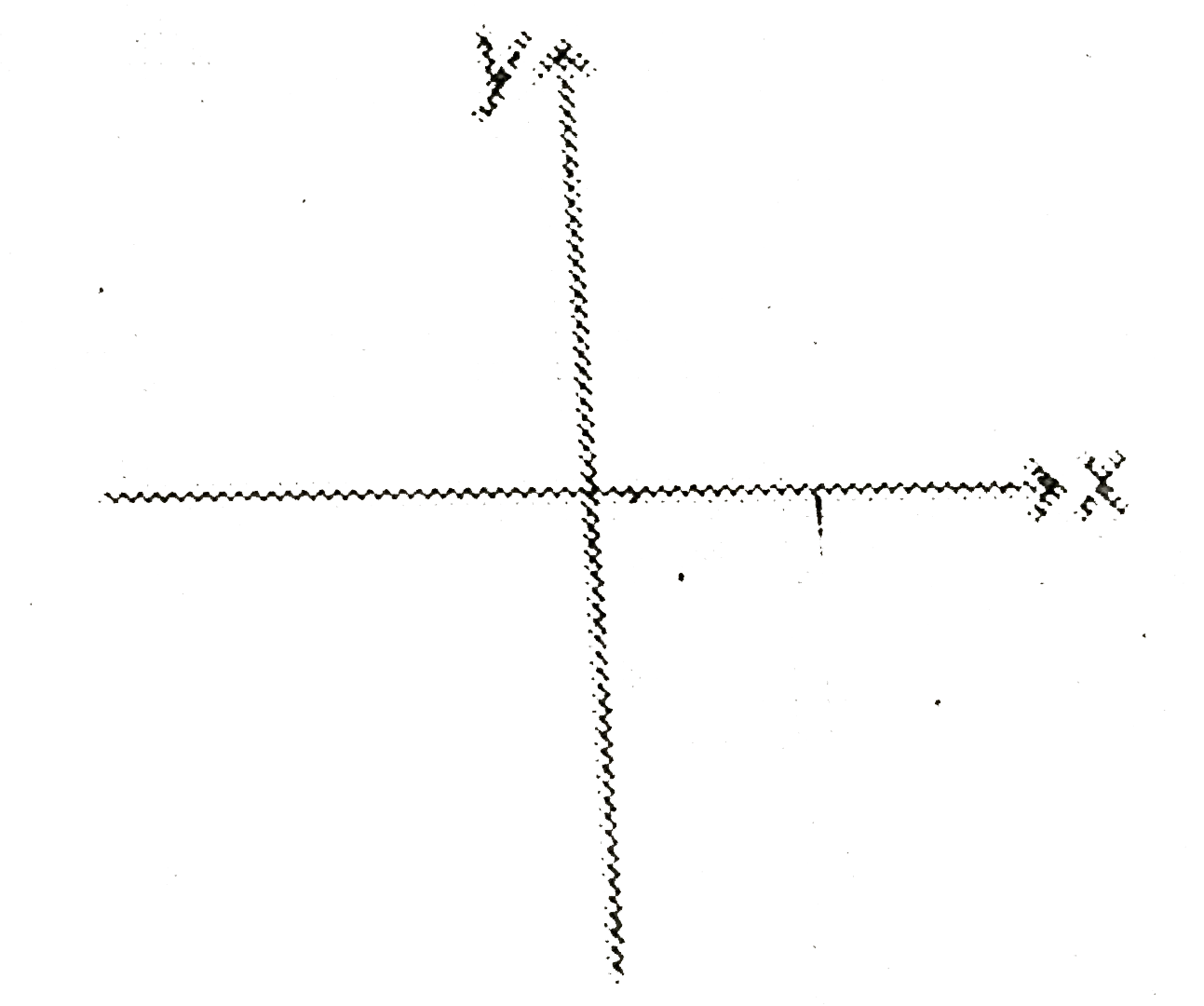The motion of a particle is given by x=Asinωt+Bosωt. The motion of the particle is
not simple harmonic
simple harmonic with amplitude A+B
simple harmonic with amplitude (A+B2)
simple harmonic with amplitude √A2+B2
The correct Answer is:D
To determine the nature of the motion of a particle described by the equation x=Asin(ωt)+Bcos(ωt), we can follow these steps:
Step 1: Identify the Form of the Equation
The given equation is a combination of sine and cosine functions. It is expressed as:
x=Asin(ωt)+Bcos(ωt)
This form suggests that the motion could be periodic, but we need to analyze it further.
Step 2: Convert to a Single Trigonometric Function
To analyze the motion more clearly, we can convert the expression into a single sine or cosine function. We can use the trigonometric identity:
Rsin(ωt+ϕ)=Rsin(ωt)cos(ϕ)+Rcos(ωt)sin(ϕ)
Where:
- R=√A2+B2
- cos(ϕ)=AR
- sin(ϕ)=BR
Step 3: Calculate R and ϕ
Using the values of A and B:
R=√A2+B2
Now we can express the original equation as:
x=Rsin(ωt+ϕ)
This shows that the motion can be represented as a simple harmonic motion.
Step 4: Identify the Characteristics of the Motion
From the equation x=Rsin(ωt+ϕ):
- The amplitude of the motion is R=√A2+B2.
- The motion is periodic with angular frequency ω.
Conclusion
The motion of the particle is simple harmonic motion (SHM) with an amplitude of √A2+B2.
---
The given equation is a combination of sine and cosine functions. It is expressed as:
x=Asin(ωt)+Bcos(ωt)
This form suggests that the motion could be periodic, but we need to analyze it further.
To analyze the motion more clearly, we can convert the expression into a single sine or cosine function. We can use the trigonometric identity:
Rsin(ωt+ϕ)=Rsin(ωt)cos(ϕ)+Rcos(ωt)sin(ϕ)
Where:
- R=√A2+B2
- cos(ϕ)=AR
- sin(ϕ)=BR
Using the values of A and B:
R=√A2+B2
Now we can express the original equation as:
x=Rsin(ωt+ϕ)
This shows that the motion can be represented as a simple harmonic motion.
From the equation x=Rsin(ωt+ϕ):
- The amplitude of the motion is R=√A2+B2.
- The motion is periodic with angular frequency ω.
The motion of the particle is simple harmonic motion (SHM) with an amplitude of √A2+B2.
Topper's Solved these Questions
- SIMPLE HARMONIC MOTIONBook:FIITJEEChapter:SIMPLE HARMONIC MOTIONExercise:Assignment Problems (Objective) (Level-I) (Assertion Reasoning type)
Explore 3 Videos
- SIMPLE HARMONIC MOTIONBook:FIITJEEChapter:SIMPLE HARMONIC MOTIONExercise:Assignment Problems (Objective) (Level-II)
Explore 20 Videos
- SIMPLE HARMONIC MOTIONBook:FIITJEEChapter:SIMPLE HARMONIC MOTIONExercise:Assignment Problems (Subjective) (Level-II & III)
Explore 13 Videos
- SEMICONDUCTOR AND DEVICEBook:FIITJEEChapter:SEMICONDUCTOR AND DEVICEExercise:SOLVED PROBLEMS Objective: Level-I
Explore 20 Videos
- TEST PAPERSBook:FIITJEEChapter:TEST PAPERSExercise:PHYSICS
Explore 747 Videos
Similar Questions
Knowledge Check
The motion of a particle is given by x=Asinωt+Bcosωt. The motion of the particle is
Anot simple harmonicBsimple harmonic with amplitude A + BCsimple harmonic with amplitude (A+B)2Dsimple harmonic with amplitude √A2+B2The motion of a particle is given by
y=asinωt+bsinωt
The motion of the particle isAnot a S.H.M.BS.H.M. with amplitude (a + b)CS.H.M. with amplitude (a+b)/2,DS.H.M with amplitude √a2+b2The motion of a particle is given by x=Asinωt+Bcosωt. The motion of the particle is
Anot simple harmonicBSHM with amplitude A+BCSHM with amplitude (A+B)/2DSHM with amplitude √(A2+B2)
The position of a particle in motion is given by y=Csinωt+Dcosωtw.r.t origin. Then motion of the particle is
View SolutionThe position vector of a particle is →r=acosωti+asinωtj, the velocity of the particle is
View SolutionThe displacement of a particle along the x- axis it given by x=asin2ωt The motion of the particle corresponds to
View SolutionEquation motion of a particle is given as x=Acos(ωt)2. Motion of the particle is
View SolutionA xandy co-ordinates of a particle are x=Asin(ωt)andy=Asin(ωt+π/2). Then, the motion of the particle is

View Solution

